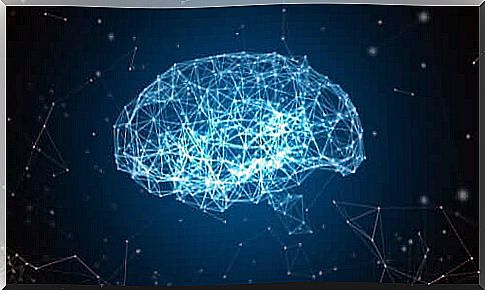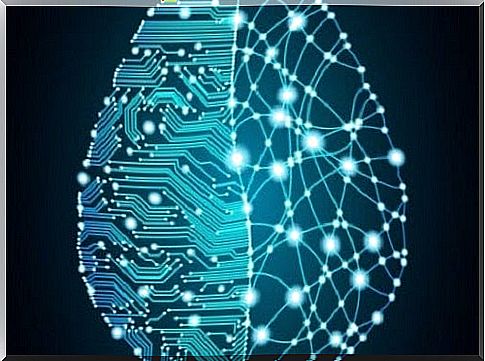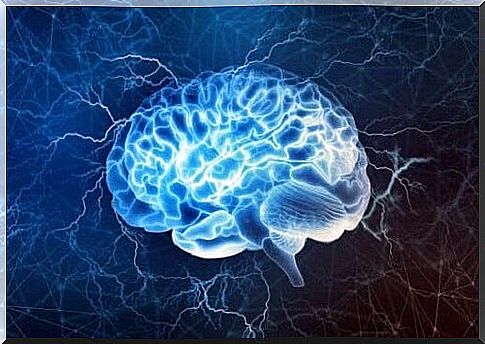Blue Brain: A Reconstruction Of The Brain

In this article, we’re going to talk about a project called “Blue Brain.” Astrophysicists are looking beyond our planet to discover how space works. Similarly, neuroscientists look inside the human body to unravel the brain.
Such an ambitious goal, a common pursuit of scientists for many years, is now a de facto research project. The initiative was named Project Blue Brain and was created in 2005 by Swiss professor Henry Markram.
Blue Brain: the digital map of the brain
It is very typical for people to make cards. In this way they represent research findings or knowledge in general. That’s basically how information is passed from one generation to the next.
The New World maps represented the paths and roads of an entirely new continent. Similarly, the Blue Brain Project also aims to create a digital map.
That map reconstructs, in the most precise way known to date, the neural pathways of the human brain and how they work. The map would also allow scientists to examine even the most distant corners of this organ.
In May 2005, the Brain Mind Institute of the École Polytechnique Fédérale de Lausanne (EPLF) began to reconstruct the structure and functions of the brain in a biologically detailed manner.
The technique they used is called reverse engineering. This ensures that the project mainly consists of simulations and representations of the brain.
The researchers chose a rodent brain as a representative basis for the human brain (which, of course, is much more complex). This had to do with the similarities, on a different circuit level, to mammalian brains.
The technology behind this initiative also uses a Blue Gene supercomputer that runs the NEURON software.

Other related projects
The empirical foundation of the project and the model used for this foundation is a connection map of the brain neurons. This card is called a connectome.
This model contains a realistic simulation of the brain neurons. Scientists thus hope that it will become a complete encyclopedia of the brain and the mystery of the mind.
Of course, a project of this magnitude would hardly survive without international staff. That is also the reason that other projects have been started to specifically support Blue Brains. These include:
- Cajal Blue Brain Project. This project is coordinated by CeSViMa (the Supercomputing and Visualization Center of Madrid).
- IBM’s Joshua Blue Project. This project aims to build artificial intelligence computers and software that mimic the human mind.
- The HBP or the Human Brain Project. Many European universities are also contributing their own scientific and computing efforts to Blue Brains to research the human brain.
What is the difference between the Blue Brain project and other similar projects?
Supercomputing makes it possible for the Blue Brain to propose reconstructions and simulations. This is a radically new approach to understanding brain activity.
It is approached as a multi-level structure. Therefore, this “layered” structure makes room for the functional diversity and infinite complexity of the mind.
So what is the surprising detail with which neuronal modeling works in this project? Ultimately, it will involve the construction of a brain simulation at the molecular level. It would open doors to new gene expression studies and ultimately provide unprecedented clinical benefits.
A brief history of the project
- 2005. The first cellular model was completed.
- 2008. The first artificial cellular neocortical column of 10,000 cells was built.
- 2011. The Blue Brain Project is building a model that multiplies the number of columns of the earlier model by 100. A total of one million cells is then reached.
- 2014. The official reconstruction of a rat’s cellular brain.
- 2023. By that year, the Blue Brain Project expects to have a complete reconstruction of the human brain with a total of 100 billion cells.

Why so much effort?
For example, such in-depth knowledge of the brain would bring clinical benefits. In addition, there is also an ultimate goal that is much more mysterious than the social imaginary.
By unraveling the intricate connection between the brain parts, scientists could finally gain a non-theoretical understanding of human consciousness. This is a mission to which many scientists and thinkers in the history of mankind have devoted their entire lives.
For now and as a harbinger of the amazing findings to come, the Blue Brain Project released its first digital neural atlas in 3D last year. It provides in-depth information about the types of brain cells, how many there are and their position in all of the 737 brain regions.
The step from the classic manual in neuroanatomy with simple drawings to this kind of atlas in 3D is one of the greatest steps in science in the history of mankind.









